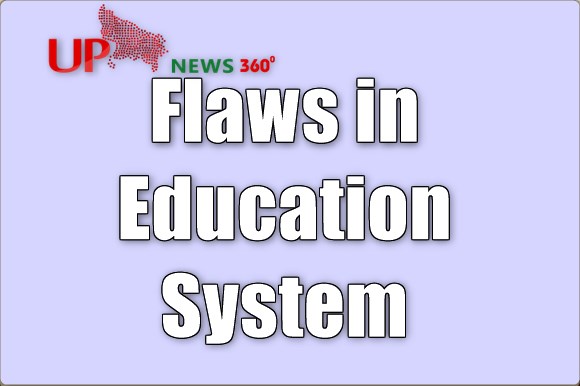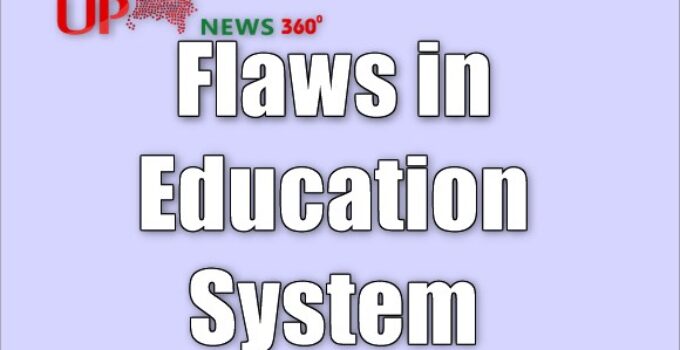Issues in Education System
Education is one of the most important aspects of life, as it provides knowledge and skills that can be used to build a better future. Unfortunately, there are some flaws in the current education system that have resulted in a lack of access to quality educational opportunities for many.
Whether it is inadequate funding or an outdated curriculum, these flaws have hindered students from reaching their full potential. This article will explore some of these issues and suggest possible solutions to help improve the education system.

Flaws in Education System
Flawed Education System
Education is the most important factor in achieving one’s goals. In contrast to the struggles of less developed countries to educate their entire populations, the industrialized world is nevertheless plagued by a defect in its own educational system.
The British wanted to turn India into a nation of education clerks and coolies, so they imposed their system on us. Independence came in 1947, but the government didn’t do much about India’s education system; it still has a lot of room for improvement. Indian education is currently on a turbulent ride, and the future is uncertain.
Check: Advantages of co education
In primary school, attaining a 100 percent literacy rate is still a distant ideal, the most fundamental foundational step toward great education. More than half a billion individuals in India are still unable to attend school at the primary level. Tenth-grade exams are often the last time many kids in poorer countries attend school before they leave out.
What are the Flaws in the Education System?
- When it comes to elite education, there are huge differences between the rich and the poor in terms of wealth in the country. Quality education is only available to those who can afford to pay for it. Primary school education in the Philippines is free, however, it is of very low quality, unlike in industrialized countries where public school education is highly regarded.
- Secondly, our education system is more focused on rote learning than practical applications and analytical skill development in our students. There are no available trained personnel and staff for this type of educational framework, despite government initiatives to introduce it at the elementary and secondary school and university levels.
- In low-income, government, and middle-income schools, the quality of teachers hired is not up to par. They lack both the ability to effectively communicate and an in-depth understanding of the topic matter. Candidates who don’t even meet the minimum training requirements and lack the ability to teach are often overlooked because of quotas and corruption in the selection process. Many pupils in our country’s public schools are unable to read their textbooks, which is the most glaring example.
- There is either a lack of or an incomplete development of interdisciplinary flexibility. Most Indian colleges would not enable you to take several courses on a topic that is not your major or to incorporate a minor program or minor degree into your academic record.
- Even the best universities in the country face a long-term drop in their global rankings because of a lack of funds for research and development. A much more immediate consequence of India’s university financing crisis can be seen in every Indian college classroom: there are just not enough highly educated academics working in our educational institutions.
Flaws of the Education System
- One of the most serious issues facing our nation is the influence of the general public. Children’s imaginations are being stifled as a result. Making nerds out of them while also affecting their emotional well-being. Children are compelled by their parents to attend the best colleges and universities in order to have a financially secure future. They compel people to choose careers for which they have no natural aptitude.
- Students are under a lot of stress as a result of this. This could result in a depressive mood, which could lead to suicide. People place a great deal of importance on achieving higher grades than their peers. The pressure to attend a reputable school is not just for educational purposes, but also for the sake of one’s future marriage.
Problems in Education System
The flaws in the education system are becoming increasingly apparent. From inadequate resources to overcrowded classrooms, the problems with the traditional education model are beginning to take a toll on students and teachers alike. With schools struggling to meet basic standards of quality education, it is no wonder that dissatisfaction levels amongst educators and families are on the rise.
Lacking fund is one of the biggest issues facing schools today. The lack of resources not only affects how much a school can offer its students, but also impacts the overall quality of instruction. Furthermore, many schools struggle with overcrowding as well; this means there are fewer available resources for individual students, resulting in less personalized attention and support in the classroom.
Conclusion
Addressing the challenges posed by the education system’s shortcomings, one crucial aspect that needs examination is how governmental policies impact the accessibility of tertiary education for the younger generation.
Make it possible for students who have already decided on a career path to get advanced training in that field as soon as possible. Some people may discover that their envisioned future employment isn’t what they actually want after all, whether it’s because they simply want to give it a shot or because they feel pressured by others to do so. Students who desire to change jobs should be able to do so without too much difficulty in the educational system.
Despite the fact that these improvements will take some time to implement, taking one step at a time will assist our next generation to fulfill their full potential. Even if these adjustments are costly to make, the benefits will undoubtedly surpass the costs. To be effective, education must be implemented correctly, and we must never stop working to improve it.
Table of Content




